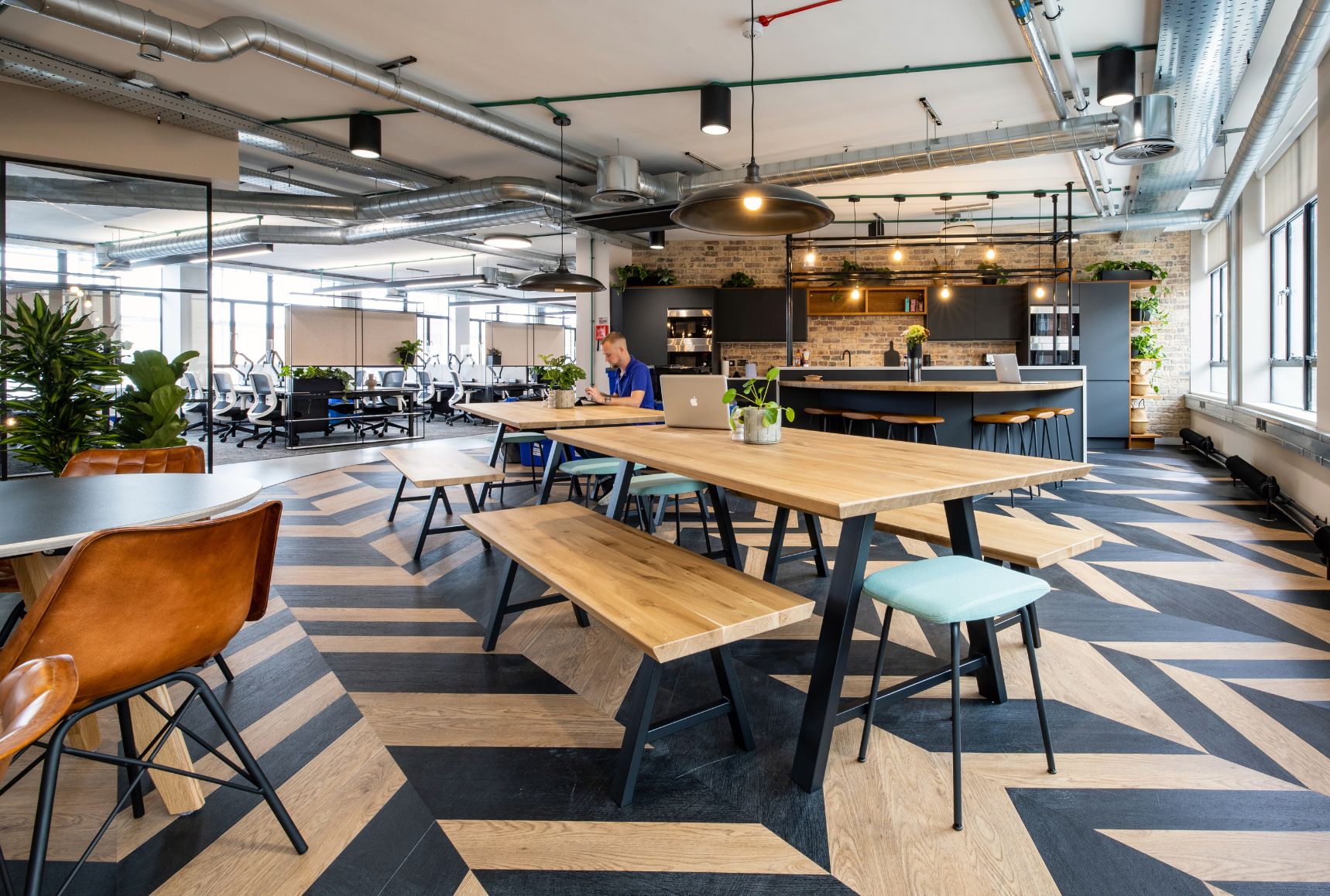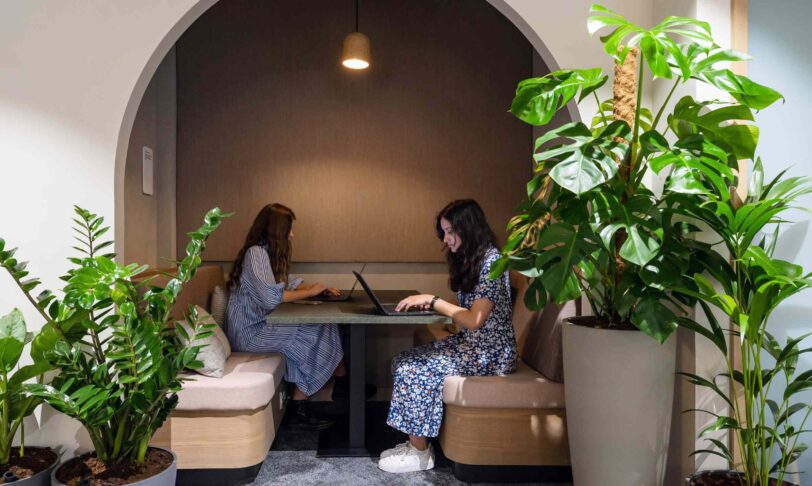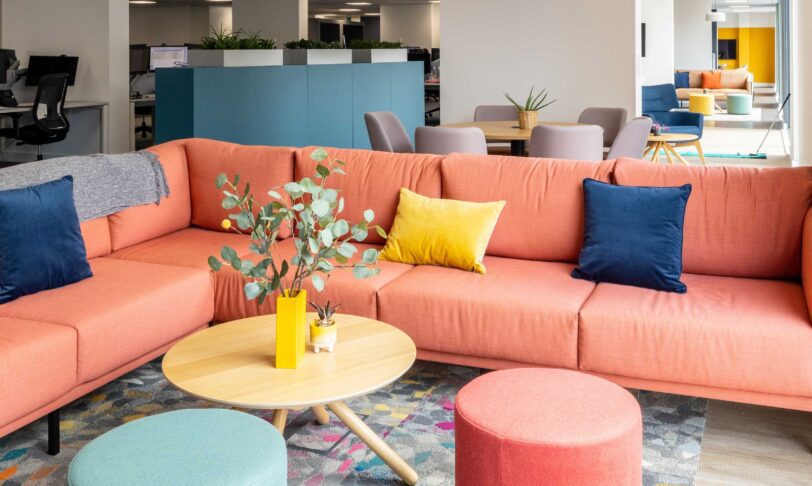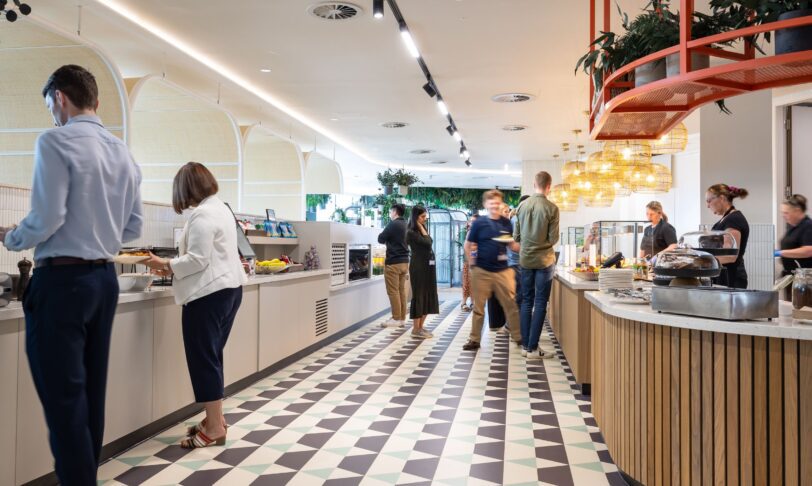What are the benefits of flexible workspace design?
Take a minute to scroll through LinkedIn and chances are you’ll encounter the word ‘flexibility’. Some more cynical readers may groan at yet another reference to what they believe is simply another perennial buzzword. We don’t tend to take corporate jargon too seriously, but it’s undeniable that today’s workers are not just prioritising flexibility, but expecting it.
And they’d be right to.
A flexible employer understands that people are different and therefore have different needs and commitments. A flexible employer also trusts people to do their job in a way that suits them best.
‘Flexibility’ may refer to people’s schedules, styles of working or even where they work. This article will explore how people benefit from a flexible workspace, and how these spaces work in practice.
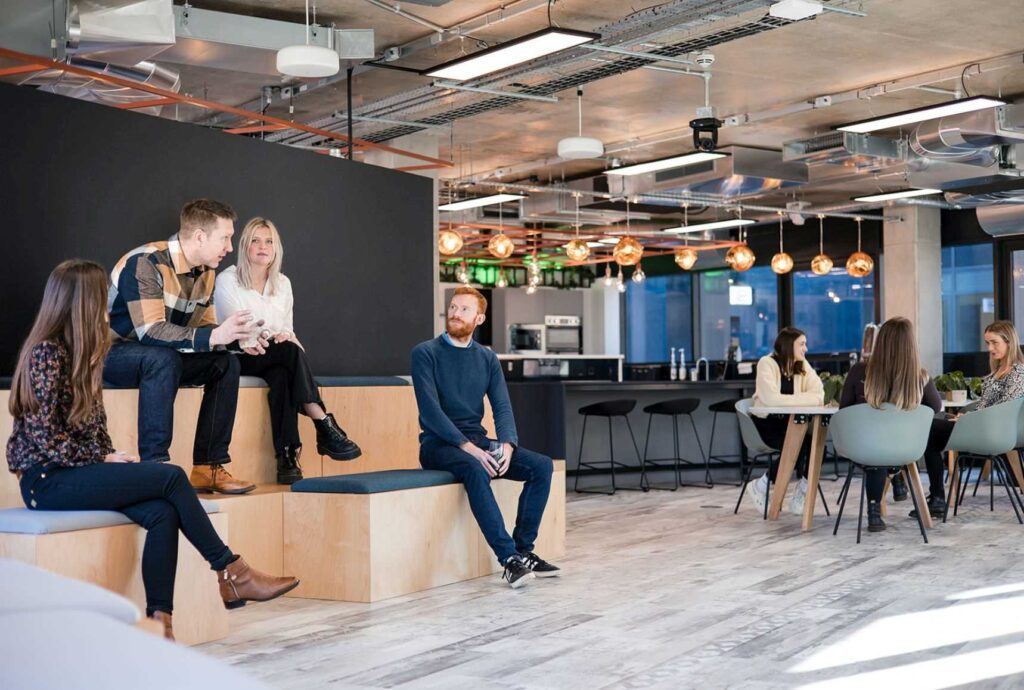
So what exactly is a flexible workspace?
Putting it simply, a flexible workspace has been designed and built to accommodate individual approaches to work. Here’s what that might look like:
Varying layouts
Ever been to a so-called ‘flexible’ workspace only to be presented with swathes of identical desks and chairs? Instead, it should be broken up into a series of spaces for either collaborative or independent working. People should be able to move seamlessly between spaces based on what is required to complete a task. This could mean, for example, having dedicated areas for people to bounce ideas off each other but also solo workstations when they need a private place to focus.
Scalable spaces
Flexible workspaces leave room to grow. This doesn’t just refer to floor space to shove in a few more tables. For example, more companies are using laptops and tablets rather than desktops, making it easier for them to onboard multiple employees at the same time. Another common example is cloud-based technology, which has become the norm as companies have gone remote. Ultimately, with an increasingly mobile workforce, it shouldn’t be a hassle to get new people quickly up and running.
There are times when businesses need to rework the layout of their office as teams expand. At Interaction, we want to make sure this isn’t too arduous of a process! We often incorporate modular furniture and systems in our office designs and office fit-outs. These include moveable hard and soft partitions and tiered seating that can be separated and wheeled about. Whether clients are planning a whole new office layout or want to be able to quickly gather the team in a ‘town hall’ space, they can quickly shift things around in any way necessary. Find out more here.
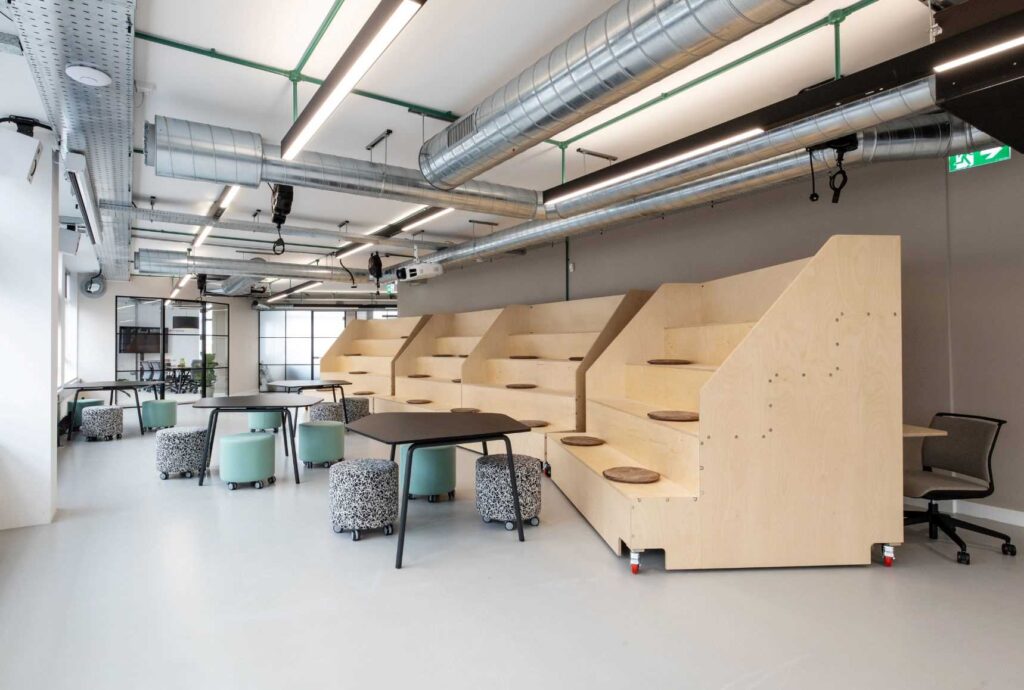
Adaptable and inclusive workspaces
A flexible workspace acknowledges that people aren’t assigned to a single desk until they retire! Instead, people should be able to make any available space work for them. A primary example is adjusting furniture for their comfort, be it their actual desks or their seats and monitors. However, it should also ideally be possible to move workstations. This is why many offices create banks of desks that can break up for individual use. The best workplaces also ensure that key amenities such as charging ports can be accessed from as many different places in the office as possible.
Workplaces must be adaptable for everyone – including those with additional needs. Common examples include, of course, ramps and lifts for wheelchair users and ergonomic chairs for reduced risk of musculoskeletal pain and increased comfort. However, there are many more possibilities for inclusive design, such as dimmable lighting and noise-free spaces for people who may experience sensory overload and accessible door handles for people with reduced mobility. It’s crucial that everyone is able to make any available space work for them, regardless of their requirements.
What are the benefits of a flexible workspace?
Flexible workspaces aren’t a sign of things to come – they’re what people need in the here and now. But if you’re concerned that your workspace is stuck in the past, here are just a few benefits so you can make a convincing business case for flexible design:
- Better collaboration: Flexible design makes it easier for people to work together properly. Instead of having everyone crowding around a single desk, breakout spaces and meeting rooms can help to foster a group dynamic. This means everyone is comfortable and able to have a seat at the table – both literally and figuratively.
- Increased productivity: Productivity increases when you give everyone the space they need to do their best work. As we mention in our guide to workplace productivity, a high output isn’t the be-all and end-all. A flexible workplace allows people to get work done to a high standard while still maintaining a healthy work-life balance.
- Higher employee satisfaction: People want to have autonomy at work, and a flexible workspace allows them to fulfil their responsibilities how and where they see fit. This means that employees feel empowered, which will increase not only their motivation and satisfaction but also their personal wellbeing.
Examples of flexible workspace design
At Interaction, we specialise in creative, modern and people-centred workspaces. This means we can design for flexibility in every way you can imagine. Here are just a few examples of flexible spaces we’ve designed and built for our clients:
Fleetcor
Fleetcor is a world-leading provider of business payment solutions. While they always intended to move their office, their initial plans were complicated by COVID restrictions. This led to an extended period where all employees were working remotely. Fleetcor asked our team to create a fantastic new space to welcome everyone back to and we were more than happy to oblige.
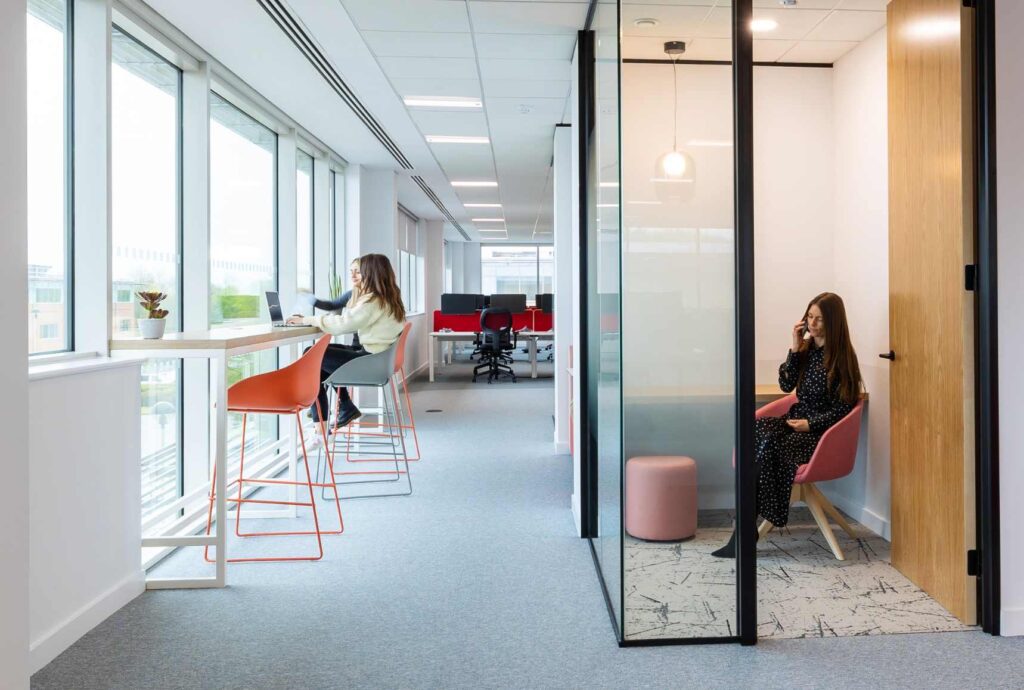
What makes this particular workspace unique is that each floor is broken up into a series of four “neighbourhoods”. Each neighbourhood includes a dedicated quiet space, a meeting area and collaborative workspaces. They are also completely scalable, with no rigid divisions or partitions so everyone can move between spaces freely based on what they need at that moment.
Granger Reis
Granger Reis is an executive search agency based in the heart of Bristol. They came to Interaction seeking a space that’s brimming with personality, far away from the traditional office set-up, and could encourage free-flowing movement between home and the office. As you can imagine, this type of brief is right up our street!
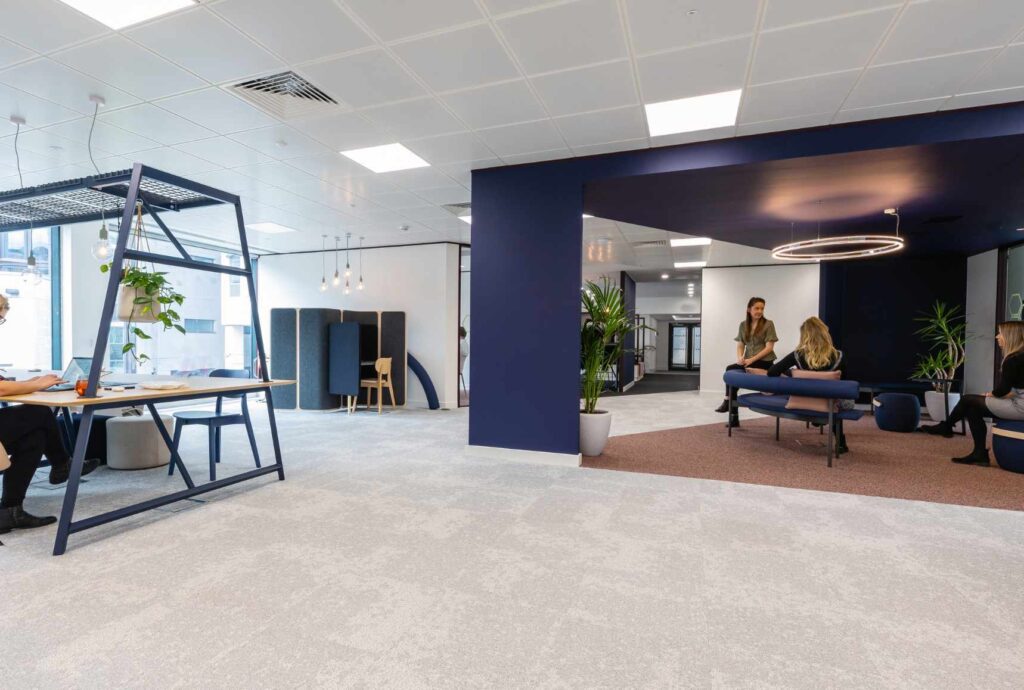
It was crucial that the office was a ‘destination and a choice’ for employees – somewhere they wanted to work rather than feeling obliged to do so. We built a stylish yet comfortable broken-plan office that could enhance collaboration while still offering spaces free of any distractions. We also ensured there was ample distance between workspaces and communal areas for socialisation.
What to consider when creating a flexible workplace strategy
A key thing we want to reiterate is that the best workspaces are built with purpose. While we relish the visual aspects of our work (who doesn’t love comparing colour swatches?) we want to emphasise that each choice we make reflects a wider strategy.
So if you’re considering an overhaul for your workspace, ask yourself: what do you hope to achieve? Do you want to encourage innovation and creative thinking? Are you concerned that your current office may be limiting productivity? These types of questions give you an initial framework that not only stimulates but harnesses creativity. Once you’re confident you’ve got the ball rolling, you can begin to consider points such as those listed below:
- Prioritising function over style: You must not only reflect on the visual side of your branding but also your strategy and how it informs daily operations. Picture what a successful day in the office looks like – it could be people coming together to solve problems and learn from each other, or people having the space they need to think deeply and come up with new and exciting ideas. From there, it’s all about deciding on what type of workplace is most conducive to your desired approach.
- Empowering employees: This is something we’ve alluded to at various points in this article but for us it’s crucial. You want your workspace to be a place where everyone rocks up ready to put their best foot forward. Rather than shepherding them into a pallid office cubicle, give them a place that excites and inspires them!
- Embracing diversity: Many companies pay lip service to diversity without thinking about what it means at its core: everyone having the chance to flourish and offer their own valuable perspectives. A flexible workspace takes this principle and runs with it so that people’s needs, requirements and differences are not only respected but appreciated.
- Considering wellbeing: As we mentioned in our work with Granger Reis, an office should be a place where people actually want to come to. So designing an office that centralises wellbeing means creating spaces where people feel comfortable and fulfilled in their work. Take a look at our guide to workplace wellbeing to see what this might look like in practice.
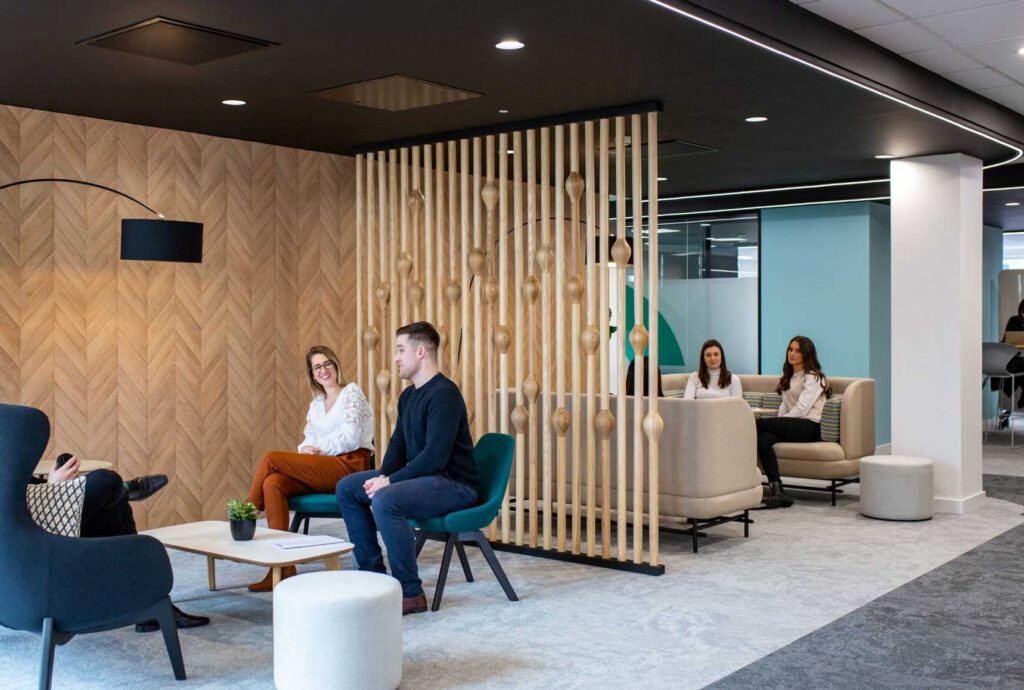
At Interaction, we want to make boring offices a thing of the past. We’re dedicated to creating innovative and vibrant spaces where people genuinely want to work. If this is something you want to offer your employees, then contact us to learn about our workplace design services. Why not chat with Charlie or call us on 01225 485 600 to speak to a member of our team.
